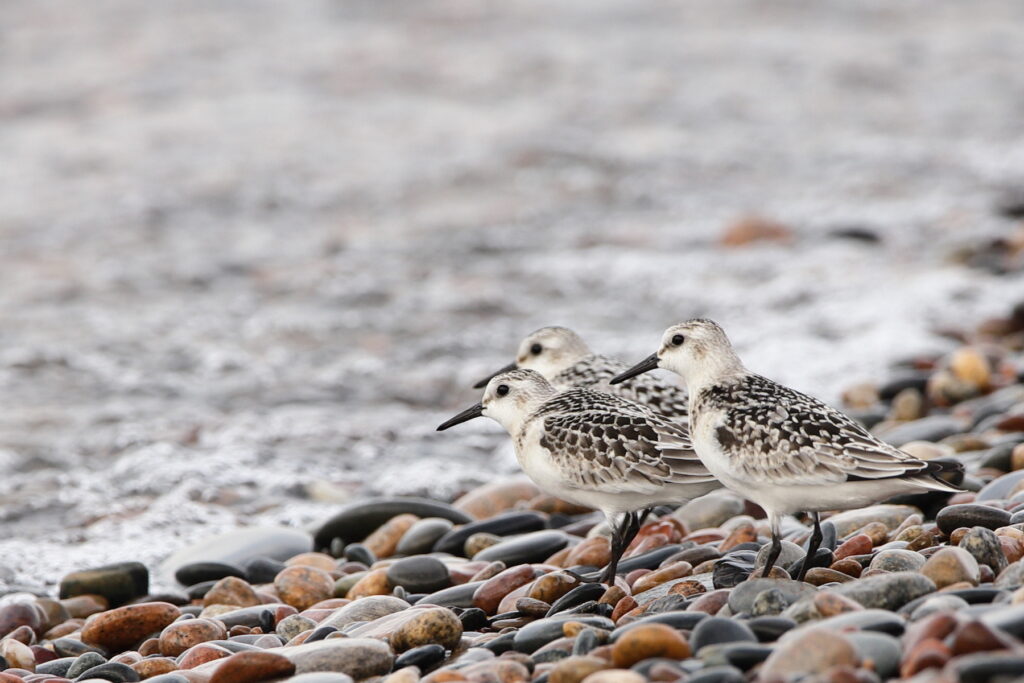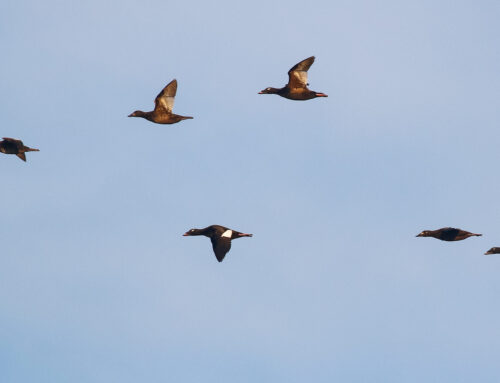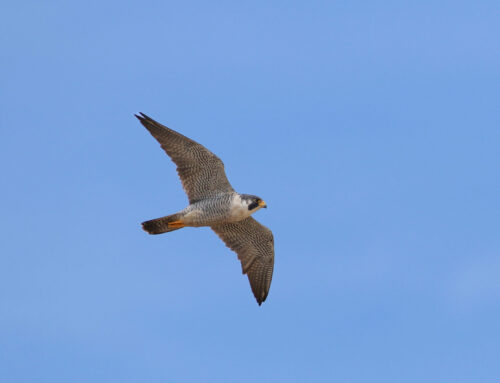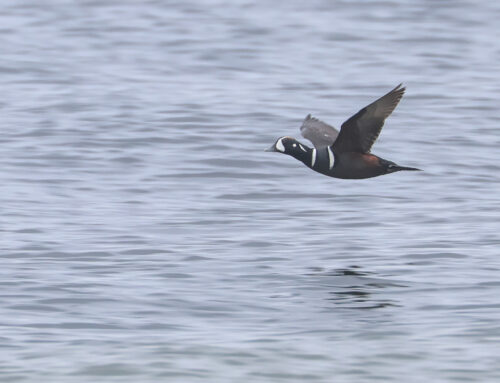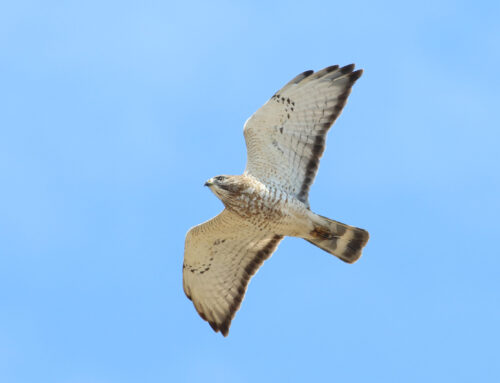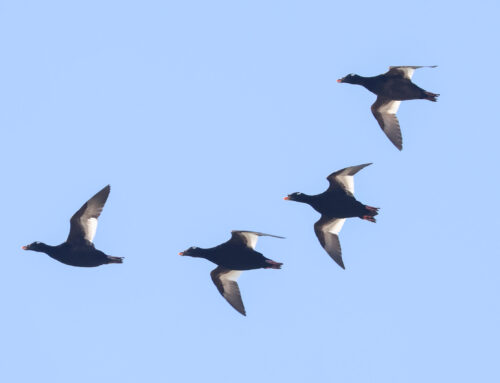At WPBO, we measure things less by day or date than we do by seasonal happenings. See, for example: “The day the snow slid off the roof;” “The night the spring peepers began to sing;” “The day the sky was full of cranes and their voices.” Instead of observing Daylight Savings Time, the owl banders adopt Bird Time. That is, when DST comes into effect, the owl banders continue on standard time, for hours of darkness are more relevant to their work than conventional business hours. Really though, in a way, all us field staff operate on Bird Time…
My count, waterbirds, starts at sunrise. On the eve of April 15, opening day, I was setting my alarm and checked when sunrise would be — 6:53 a.m., apparently. Ugh, no. It couldn’t be that early at the beginning of the season. But sunrise was, indeed, that early — and now, at this writing, it’s even earlier: 6:28 a.m. But I do love mornings. My routine goes something like this: coffee, breakfast, put on the first three layers of clothing, defrost my truck, put on the remaining layers of clothing, head to the Point. Sometimes, I forget how critical it is to warm my truck and end up making the drive with my head hung out a frosty window like a dog. It’s a good thing there’s not much traffic — or law — in Paradise…
One of the exciting things about Bird Time is that migratory birds — and, by proxy, our work — are bound less to a human calendar than they are to weather conditions. This not knowing of what exactly each day holds keeps us fresh, hopeful. I love making those first few scans across Superior: early in the day, especially, it feels like anything might happen.
The highlight of this last week of the waterbird count was the spring peak movement of Sandhill Crane. Last Friday, April 22, I tallied 7,044 in roughly four hours. In fact, the waterbird count has, at this writing, logged 12,044 Sandhill Cranes this season! This surpasses the previous seasonal high count (11,814 in 2016), and it merits mention that during WPBO waterbird count’s incipient years (1984-89), the highest spring total was just 287. In 2022, with the species much more numerous than it was a few decades ago, I get more than that in a flock.
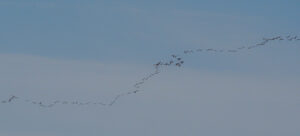
A Sandhill Crane flock heads over Lake Superior towards Batchawana Bay, Ontario. Photo by Alison Vilag
Most of the waterbird species this count focuses on pass by most numerously both (a) closer to sunrise and (b) under generally foul weather conditions. Sandhills, more tied to thermals than ducks or loons are, are an exception to this: the peak crane flight happens on conventionally nice days, and it doesn’t start until just before noon. Some days when Sandhills reach the threshold of Whitefish Point and Superior, they circle, calling, hesitant about the crossing. When this happens, counting them becomes less straightforward than when they’re merely flying across the lake. So I was really thankful that, on their peak day this spring, the Sandhills were crossing confidently. Not worrying about double-counting made it easy to just become absorbed in the great installment of Bird Time happening above me; for part of the flight, in fact, I lay down on the cobbles and got carried away in the passing-over. Overhead was filled, always, with wild bugling and remaining stationary amidst so much movement felt a little like watching a train pass by…
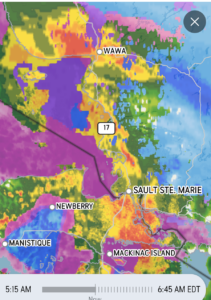
As a waterbird counter, I get to stand out in some truly wild Superior moods…this screen grab is from the radar at the start of April 23rd’s waterbird count.
Conversely, poor weather — as long as the winds are from favorable directions — is great duck weather. The day after the crane flight, April 23, I had what’s been my best duck flight so far this season (76 Mallard, 76 Northern Pintail, 46 Greater Scaup, 142 Common Goldeneye, and lesser numbers of great diversity of other waterfowl.) And, remarkably, though I’d had more than 7,000 the day before, zero cranes passed WPBO on this day. The weather, though? A thunderstorm, heavy rain, winds from the southeast so strong that ducks were blowing sideways up the lake. When I work here, I sometimes take screenshots of the weather radar for a trophy shelf of sorts: the yeah, I stood out in that trophy shelf. Here’s the April 23 addition to that shelf…
Other arrivals at the waterbird count this week include: Piping Plover (April 25), an early Dunlin (April 23), and Caspian Terns (April 27). The terns showed up on a day with brisk north winds and a 9-degree (Fahrenheit) windchill. They moved up the bay above the ice-mounds, rounded the Point, hit the wind, and turned back the way they’d come. I was amused, for when, walking out that morning, I’d left the shelter of the jack pines for the open beach, that had been my first inclination, too — to turn back the way I’d come. However, us migration counters (in particular, us waterbird counters!) don’t have that luxury when we’re working on bird time.
As always, thanks for reading. Remember that you can follow the count live on Dunkadoo! Here’s the link: https://dunkadoo.org/explore/whitefish-point-bird-observatory/waterbirds-spring-2022
~ Alison Világ
2022 Spring Waterbird Counter
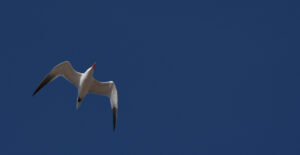
One of WPBO’s first Caspian Terns of 2022. Photo by Alison Vilag
Featured photo: Sandhill Cranes migrating over Whitefish Point against the type of sky we expect the peak flight to come on. Photo by Alison Vilag
Support WPBO’s Research During Birdathon on May 28
Our skilled team of bird counters and volunteers at Whitefish Point Bird Observatory will set out on a mission to count as many bird species as possible in one day on May 28, 2022, as part of an annual fundraising event supporting the amazing work happening at WPBO! In 2021, a whopping 152 species were counted and the event brought in $6,826.65! Let’s hope this year is just as successful.
This is where you come in! Because our work is 100% donor-funded, Birdathon provides all of our supporters with an opportunity to make a significant impact on our work by making a pledge or direct donation to Birdathon (even after the event). Any amount is helpful, but have some fun with it and consider letting your donation or pledge be inspired by a per-species amount.
Learn more about Birdathon and find links to donate at wpbo.org/birdathon.
Thank you so much to everyone who supports the work being done at WPBO!
